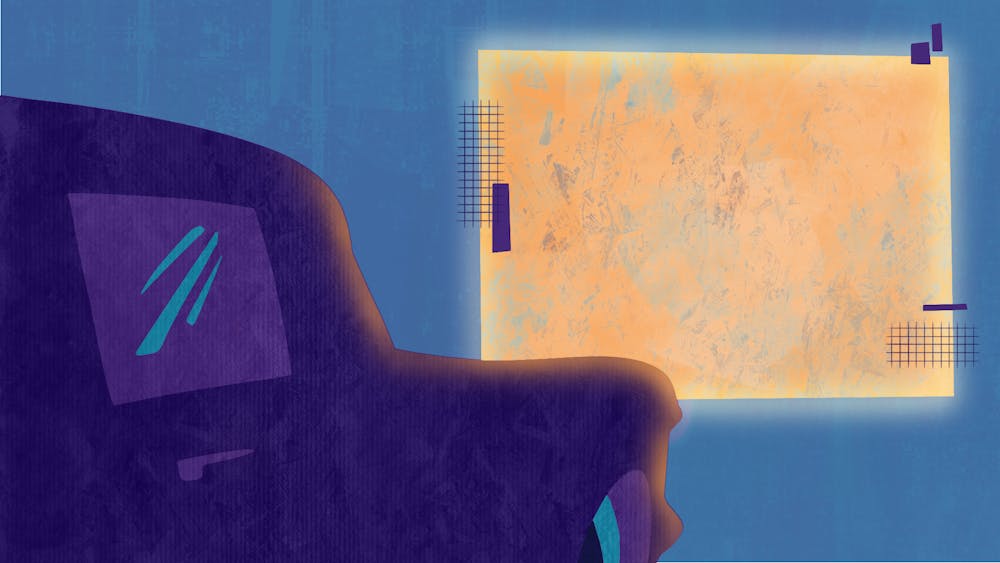It’s not until dozens of strangers yell “Don’t do it girl, you deserve better!” at my back that my city–for–the–summer starts to feel like home.
They aren’t yelling at me, they’re yelling at Jess Bhamra right in front of us. I’m yelling too—no matter how many times I watch Bend It Like Beckham, I can’t bring myself to root for her arc with Joe until the very end. Squeezed in between 100 other blankets on an elementary school lawn, I can just make out the shadows of a group of kids kicking around their own soccer ball.
When Jess scores the winning penalty kick, our field erupts into cheers like we’re in Paris for the Olympics. The soccer players jump up and down with excitement too. After the film ends, the organizers flash the movie that will be shown next week, evoking a murmur of excitement from the crowd. We will be back.
Outdoor movies are probably one of the most clichéd summer bucket list items to exist. Type “outdoor movie” into Google and a curated drop–down menu will appear for you based on vibe (Trendy! Cozy! Romantic!). The cousin of the outdoor movie—the quintessential all–American drive–in film—was first patented nearby in Camden, N.J. in the 1930s. Finding enough land to fit so many cars was difficult, though, which led many drive–ins to fold.
Enter the outdoor movie. First appearing in Australia in 1906, it was waiting in the wings all along. Outdoor film screenings most typically repurpose land that is used for something else: the elementary school field, an apartment rooftop, and a boardwalk are my most recent viewing spots.
Outdoor movies are an inherently social activity, more so than the drive–in. Every audience member listens to the same audio instead of turning a radio dial. Rather than being enclosed in separate cars, all find themselves roofless, sharing a view of the stars. For about two hours a week, this is our social network.
I am in relentless pursuit of third places—those magical spaces that aren’t one’s home or workplace where one can find community. Cafés are often cited as examples of third places, particularly if you’re a regular. Public libraries are another. But in this digital age that we are firmly entrenched in, third places are an endangered species. Take the beautiful museumlike library I wandered into with a friend a couple of days ago, only to find out it had been commandeered by an Apple Store (a sanctuary for one of the culprits of the death of the third place).
Across many sectors of society, opportunities for connection with strangers have been forgone in favor of opportunities catered toward the individual. Movie–viewing is no exception to this.
I am known to cry easily and loudly while watching movies. When I went to watch Inside Out 2, though, my friends couldn’t tell I’d been characteristically sobbing my way through it until we left the theater. Our seats were so far apart, and the audio was so loud, they couldn’t see or hear me crying. Whenever I watch a film outdoors, though, not only do my friends clock my tears, but most of the strangers clustered around me do too. In a world that can feel designed to dull one’s senses, outdoor movies heighten them. The entire viewing experience is one that feels much more shared, all set within a neighborhood space that itself is temporarily sharing its space with viewers.
Next time you watch a movie outdoors, pause to take in the other viewers around you. It can be a rare moment to observe common fixation and awe. The sight of different demographics, phones cast aside, enraptured together by the same film, temporarily pushes back against the narrative that America is the most polarized it's ever been.
Amid the smell of pizza, cheap wine, and freshly cut grass, we sit and find some semblance of community. That might be the most valuable bucket list item one could check off this summer.

